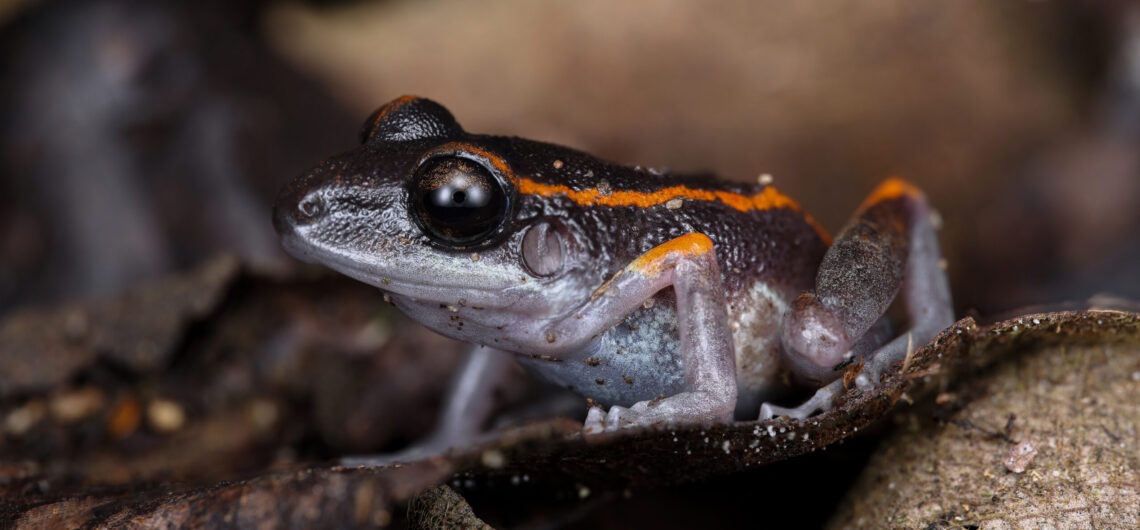Gaige’s Rain Frog
Pristimantis gaigei
Photo by Rafael Lau
Gaige’s Rain Frog, also known as Fort Randolph Robber Frog and False Dart Frog, is a species of frog belonging to the family Craugastoridae. It is distributed from southwest Costa Rica to western Colombia. Interestingly, Gaige’s Rain Frogs present color variation throughout their distribution. The populations found in Colombia have brownish cryptic colorations, while individuals from Central American populations, including those in Panama, are black or brown with bright yellow or orange dorso-lateral bands, making them highly conspicuous. Frogs with this coloration are considered to be mimicking individuals of the Striped Poison Dart Frog (or Lovely Poison Frog) Phyllobates lugubris, which also have paired dorso-lateral stripes that can either be yellow, orange, gold, or turquoise. The bright coloration in this frog is aposematic, which means that it serves as a warning to possible predators, given that these frogs possess skin toxins. Although Striped Poison Dart Frogs are not as toxic as other species within the genus Phyllobates, Gaige’s Rain Frogs’ bright coloration is considered a case of Batesian mimicry, which is when a non-toxic species mimics the coloration of a toxic species. However, a recent study performed in Panama and published in 2020 in the scientific journal Mesoamericana reported the presence of alkaloids in the skin of individuals of Gaige’s Rain Frog collected in the Bocas del Toro and Panama Oeste provinces, evidencing that Gaige’s Rain Frogs imitating the coloration of the Striped Poison Dart Frog might be a case of Müllerian mimicry, in which two or more toxic species mimic each other’s honest warning signals. These findings hold significant implications for future evolutionary studies and research regarding defense strategies in these frogs. However, the study was performed with only one individual of each species, and studies with a bigger sample size and that explore in greater detail the type of alkaloids and other molecules present in the skin of these anurans remain to be done. There is so much to learn within the tropics!
References:
Gutiérrez-Pineda, K., Morales, R. & Batista, A. 2020. Descubrimiento de alcaloides en la piel de la rana Pristimantis gaigei, indicios de mimetismo Mülleriano en dos poblaciones de Panamá. Mesoamericana 24(1): 49-57.

